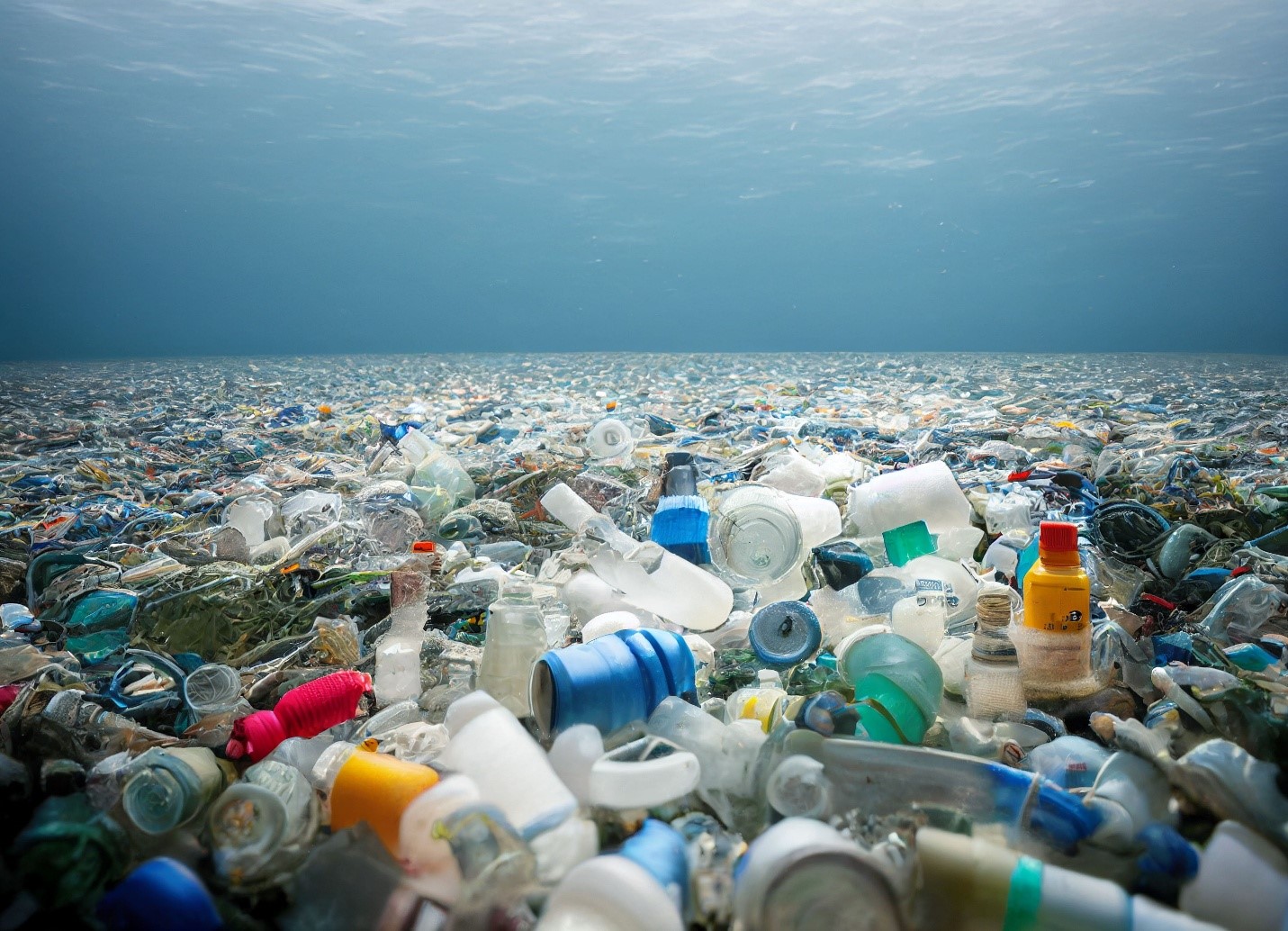Blogs
Plastic in the Ocean: Facts You Should Know Right Now

Plastic pollution in our oceans has reached crisis levels. From floating water bottles to invisible microplastics, the sea is becoming a dumping ground for human waste. What is more alarming is that this pollution is not just harming marine animals; it is making its way into the food we eat, the water we drink, and even the air we breathe. Every year, millions of tons of plastic enter the ocean, threatening ecosystems, economies, and human health. Despite the growing awareness, many people still do not realize how serious the problem has become. In this blog, we will look into the hard-hitting facts about plastic in the ocean, explore the latestocean research, and look at what we can all do to help. Continue reading:
Understanding the Scale of the Problem
According to estimates from the Pew Charitable Trusts, over 11 million metric tons of plastic waste enter the ocean annually. If this trend continues unchecked, this figure could triple by 2040. Most of this plastic originates from land-based sources such as mismanaged waste, litter, stormwater runoff, and industrial activities. Rivers act as conduits, transporting plastic debris into the seas. Plastics in the ocean exist in many forms, from large floating debris to microplastics invisible to the human eye. The scale and distribution of plastic waste are vast and dispersed, complicating removal efforts and scientific monitoring. Nonetheless, ocean research has made it clear that no marine environment remains untouched.
How Does Plastic Get Into the Ocean?
Plastic pollution is a consequence of human behavior and poor waste management. The most common pathways through which plastics reach the ocean include:
- Improperly managed landfills: When waste is not securely contained, wind and rain can carry plastics into nearby waterways.
- Littering: Everyday litter, such as water bottles, shopping bags, and food wrappers, frequently ends up in rivers and coastal zones.
- Wastewater effluent: Microplastics from synthetic fibres, personal care products, and industrial discharge enter water treatment plants, many of which cannot filter them out completely.
- Fishing and maritime activities: Abandoned or lost fishing gear (also known as “ghost gear”), along with discarded ropes and nets, contribute significantly to marine plastic.
These sources accumulate in different parts of the world’s oceans, often concentrating in gyres such as the Great Pacific Garbage Patch, a floating mass of plastic debris estimated to be twice the size of Texas.
Ocean Facts: Alarming Statistics on Plastic Pollution
To understand the magnitude of the issue, let us explore some critical ocean facts:
- Over 5 trillion pieces of plastic currently litter the ocean, weighing over 250,000 tons.
- 91% of plastic waste is never recycled. Much of it ends up in landfills or the natural environment.
- Plastic production has doubled in the last 20 years and is expected to quadruple by 2050 if current trends persist.
- Microplastics have been found in 114 aquatic species, including those consumed by humans.
- Plastic pollution causes the deaths of over 100,000 marine mammals and 1 million seabirds each year.
These ocean facts underline the need for more robust policies, innovative waste solutions, and public awareness initiatives.
The Role of Microplastics:
Microplastics are particles less than 5mm in diameter. They are either intentionally produced (primary microplastics, such as microbeads) or are the result of the breakdown of larger plastic items (secondary microplastics). These tiny particles are nearly impossible to remove from the ocean and can be ingested by marine organisms ranging from plankton to whales. Recent ocean research has revealed that microplastics are present in some of the deepest parts of the ocean, including the Mariana Trench. Microplastics absorb toxic pollutants and can transfer them up the food chain. Humans, in turn, ingest these plastics through seafood, drinking water, and even the air we breathe. The health implications of microplastic exposure are still under investigation, but early evidence suggests potential harm to the digestive, reproductive, and immune systems.
Impact on Marine Life:
Plastic waste affects marine life in several devastating ways:
- Entanglement: Marine animals such as turtles, seals, and seabirds often get entangled in fishing lines, six-pack rings, and other plastic debris, which can cause injury, drowning, or death.
- Ingestion: Many species mistake plastic for food. Sea turtles often consume plastic bags, mistaking them for jellyfish. Birds feed plastic to their chicks, leading to malnutrition or starvation.
- Habitat Disruption: Coral reefs and seabeds are increasingly being smothered by plastic waste, leading to reduced biodiversity and altered ecological dynamics.
One of the more tragic ocean facts is that a single plastic bottle can take up to 450 years to decompose in the ocean, during which time it can continuously harm marine life.
Economic and Social Impacts:
The consequences of ocean plastic pollution extend far beyond environmental damage. There are significant economic and social implications as well:
- Fishing Industry: The seafood industry faces reduced fish stocks, damaged equipment, and contaminated catches due to plastic pollution.
- Tourism: Beaches covered in plastic waste deter tourists, impacting the local economies that rely on clean, pristine coastlines.
- Human Health: As previously mentioned, microplastics in the human diet raise concerns about long-term health effects, including inflammation, hormonal disruption, and even carcinogenic exposure.
Ocean Research and Scientific Response
Ocean research has been instrumental in identifying plastic hotspots, assessing marine biodiversity loss, and innovating cleanup strategies. Satellite imagery, marine drones, and underwater sensors are now used to map plastic accumulation and monitor movement patterns.
Notable projects include:
- The Ocean Cleanup Project: This initiative focuses on removing large-scale plastic from gyres using floating barriers.
- SeaBins: Installed in marinas worldwide, these devices suck in floating debris, collecting plastic waste before it enters open waters.
- Global Microplastics Database: Researchers from various universities collaborate to map microplastic distribution and its ecological effects.
Continued investment in ocean research is essential to identify new sources of pollution, predict trends, and develop sustainable mitigation techniques.
What Can Be Done: Solutions and Strategies
The solution to ocean plastic pollution lies in a combination of policy reform, corporate responsibility, innovation, and individual action. Key strategies include:
1. Policy Intervention
Governments must enact stricter regulations on plastic production and waste management. Policies could include:
- Plastic bans on single-use items like straws, bags, and cutlery.
- Extended Producer Responsibility (EPR) laws hold manufacturers accountable for the end-of-life disposal of their products.
- Deposit-return schemes that incentivize recycling.
2. Innovation in Materials
Biodegradable and compostable materials can help replace traditional plastic products. Companies are experimenting with seaweed-based packaging, mushroom foam, and plant-derived polymers to reduce dependency on fossil-fuel plastics.
3. Corporate Accountability
Corporations play a significant role in the plastic crisis. Major brands must:
- Reduce plastic packaging.
- Commit to using recycled materials.
- Improve supply chain transparency.
- Partner with environmental organizations for waste collection and recovery.
4. Public Education and Individual Action
Every individual has a role to play in protecting our oceans. Practical steps include:
- Avoiding single-use plastics.
- Participating in beach cleanups.
- Supporting sustainable brands.
- Spreading awareness through education and social media.
Even small changes in daily consumption habits can make a significant impact when adopted collectively.
It is A Call to Action Time
The world is at a tipping point. Ocean plastic pollution is not an isolated environmental concern, it is a threat to planetary health, food security, economic development, and future generations. We must take collective action now. We can stem the tide of plastic waste by transforming our consumption patterns, supporting science and innovation, and demanding systemic change. The ocean covers over 70% of our planet and produces more than half of the oxygen we breathe. Protecting it is not an option; it is a necessity. Through rigorous ocean research, we have already uncovered shocking ocean facts that demonstrate just how intertwined our lives are with the health of marine ecosystems. The next step is turning that knowledge into action before it is too late.
Let us not wait until our oceans are choked with more plastic than fish. The time to act is now.
